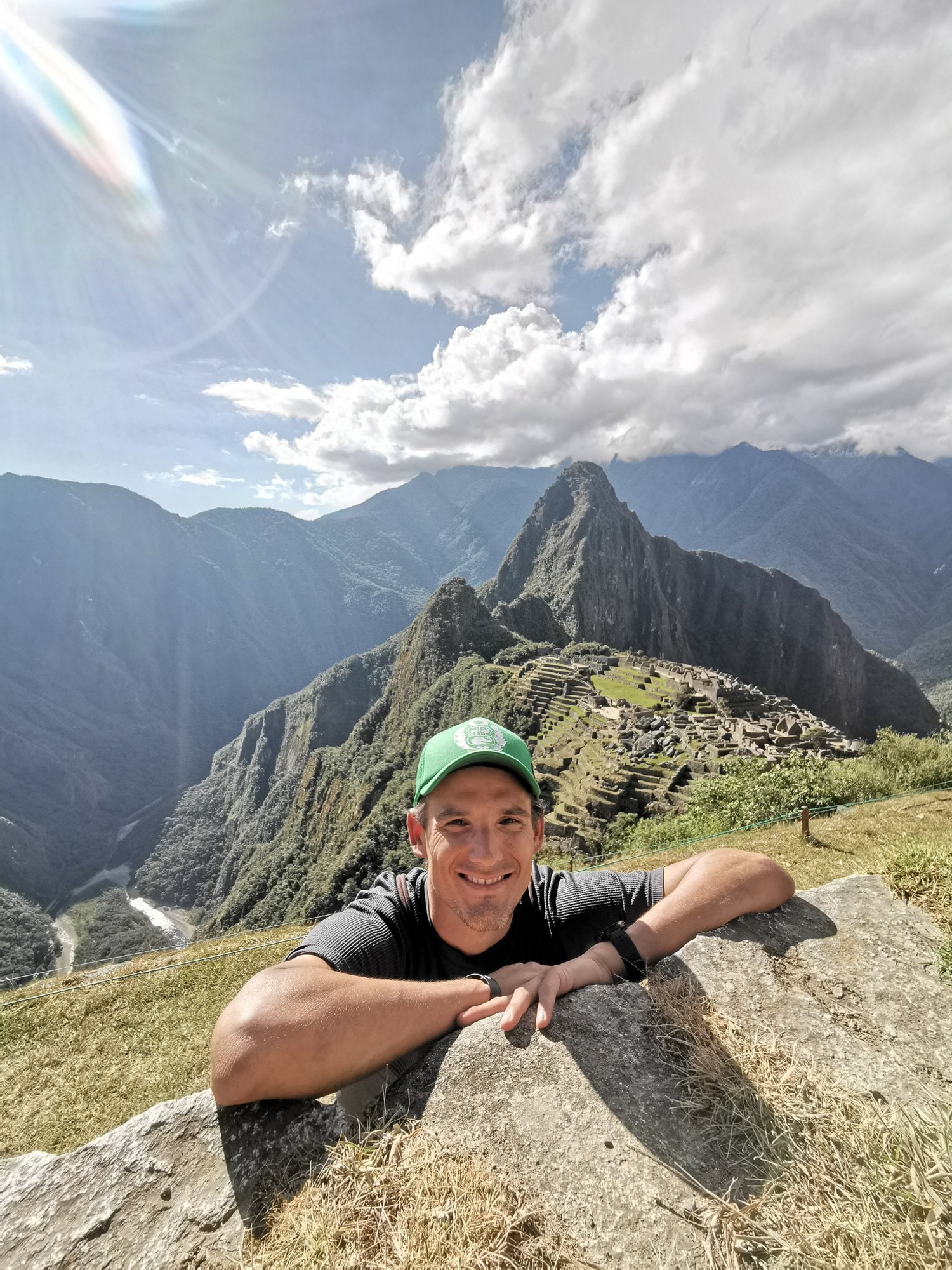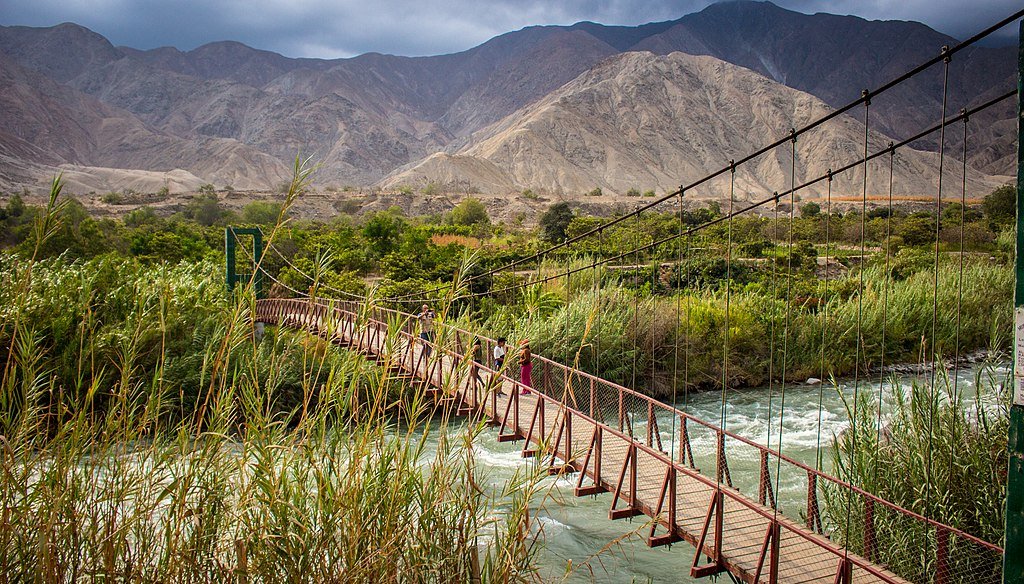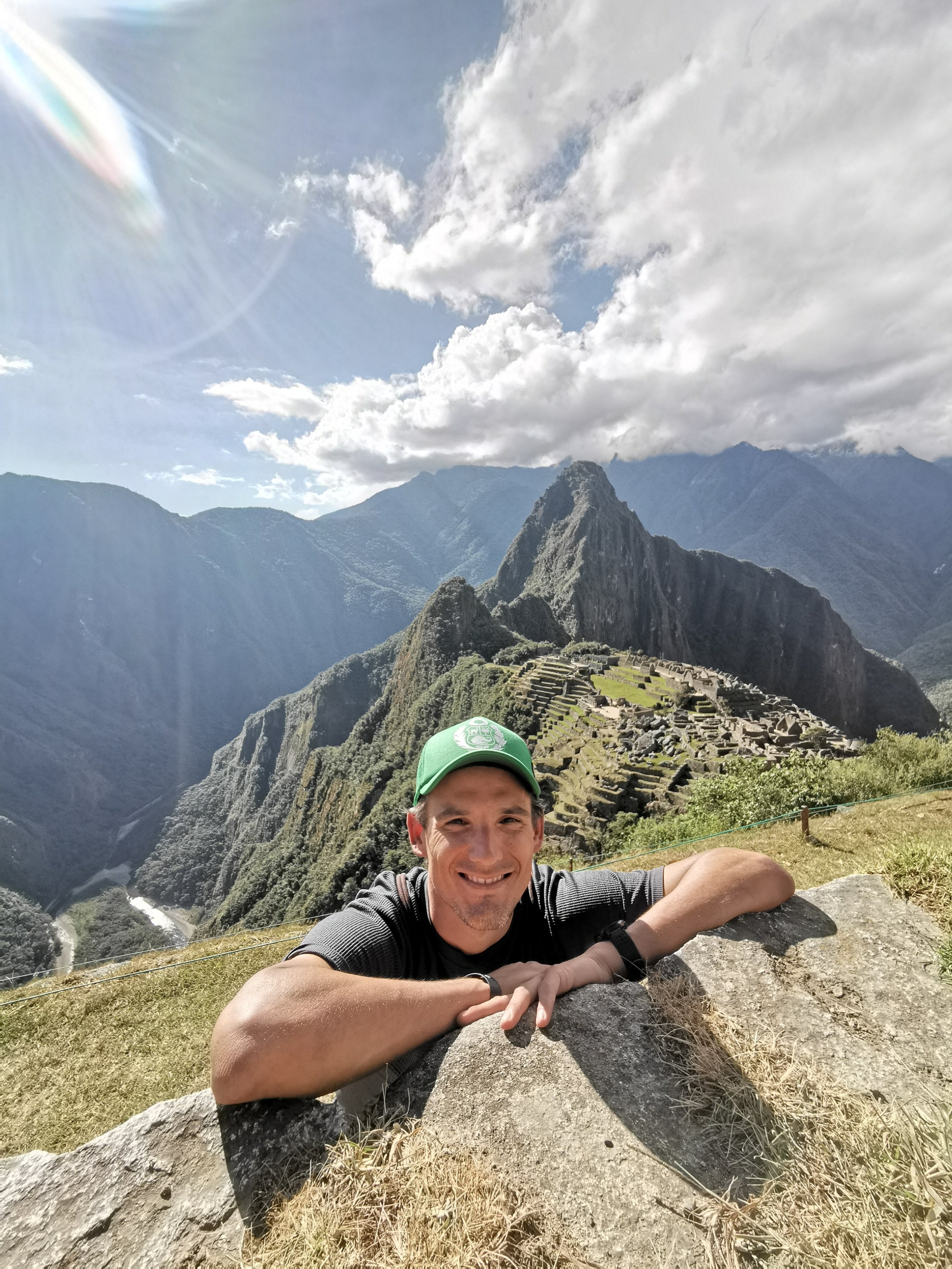Travel Guide to Peru’s South Coast: Ica, Nazca, Paracas and beyond
The long strip of desert-dominated coast stretching south from Lima to the border with Chile - a distance of over 800 miles - is an arid place that at first glance perhaps does not seem quite as enticing as the lush, Inca ruin-scattered Andean mountains to the east.
But this stretch of coastline offers up hot, sunny weather, great beaches, some of Peru’s best wildlife-spotting opportunities outside of the Amazon, and the intoxicating draw of the only other ancient sight that comes close to rivalling Machu Picchu in terms of intrigue: the Nazca Lines.
This region is full of surprises. There are the sensory delights of Peru’s best wineries, the famous Pisco sour, and seafood as delicious as anything you’ll find in Lima. And to build up your appetite, some of the country’s most thrilling adrenaline rushes await too: whooshing down immense sand dunes at Huacachina or white-water rafting on the Río Caňete.
It’s a long way from tip to tail of this region, and I recommend exploring different parts of it at different times during your visit to Peru: tour the north, around Pisco, Ica, and Nazca, as a prelude to seeing the Andes, and visit the south as an add-on to seeing Arequipa and canyon country.
Table of Contents


Why visit
The hanging bridge outside of Lunuhuaná. Photo: Kevo287, CC BY-SA 4.0, via Wikimedia Commons. Cropped from original.
For me, the key reason to visit Peru’s South Coast is its serendipity - you come to Peru expecting Lima to be impressive and for Machu Picchu and the Sacred Valley to bewitch you -, but you won’t be prepared for just how much you’ll love the south coast, with its sheer variety pleasing all comers.
Beach-lovers will relish the good surfing at Pucusana, Cerro Azul, and Mollendo. And when you tire of saltwater, river rafting on and ziplining across the Río Caňete offers a formidable freshwater fix.
Those who appreciate ancient history and mystery have some of the world’s most staggering curiosities to contemplate at the Nazca Lines, huge desert line drawings done on a scale that can only be seen from the air. You will doubtless find yourself wondering “how could a culture 1,500 years ago possibly have pulled these off?”
Further mysterious shapes in the desert at Palpa and spellbinding rock art near Tacna show the rich legacy of the artistically talented pre-Inca peoples that this region reared.
If you like to watch wildlife, you can do this with a boat trip to the ‘poor man’s Galápagos’, the Islas Ballestas, or go off trail looking for the timid alpaca-like vicuňas in the mountains above Nazca.
Outside of the South Coast’s show-stopping sights – the Nazca Lines, the El Chaco area, and Huacachina – you will usually find yourself traveling here crowd-free, or surrounded by Peruvians rather than foreign tourists. And since this is sunny, sandy, coastal Peru, a very relaxed vibe accompanies you wherever you go.
Where is Peru’s South Coast?
The South Coast stretches over 800 miles southeast from Lima to Tacna and Peru’s southern border with Chile. The first 40 miles or so south of Lima is suburban sprawl and bland vacation homes, so the South Coast proper, as defined in this guide, begins at the beach town of Pucusana.
This largely desert coastal strip also includes destinations just inland, such as Nazca, Ica and Huacachina.
This is a very long, thin region of Peru, and it is separated from various other regions of the country by the Andes mountains, which rise up along its northeastern border. So, depending on where you look in the region (from north to south), you will find the following regions to its east: the Central Highlands, Cuzco & the Sacred Valley, and Arequipa and the canyons.
How to get here
The main airport of relevance to travelers wanting to explore Peru’s South Coast is Lima, and once you’ve arrived there, it’s generally easiest to reach the coast by bus.
From elsewhere in the country, it’s fairly common to arrive into the southern part of the coast by bus from Arequipa.
Because of its length (around 800 miles), the times needed to reach different destinations throughout the South Coast vary greatly. The region begins immediately southeast of Lima, and so direct buses arriving into the north, at Pucusana for example, take just 1.5 hours from Lima.
Traveling along the main north-south road, it’s 4.5 hours to Ica and 6-8 hours to Nazca via direct bus from Lima. Destinations further south on the main road, like Tacna, also have regular direct buses, but travel times become increasingly long.
For other cities, towns, and places of interest that are not right on the main road, you will need to transfer somewhere along the way. Generally, you can book a bus heading relatively near to where you want to go, and will just have to ask the driver to let you off at the nearest transport hub, from where you can transfer and continue on to your final destination.
For exmaple, if heading to Pisco, you’ll need to get off in the town of San Clemente, and catch a transfer from there. For Lunahuaná, you need to change in Caňete. In both of these transport hubs, you’ll change to semi-informal combis (minivans) or colectivos (shared taxis) for the remainder of the ride.
Private bus operators
The luxury high-end bus operator Cruz del Sur offers a few routes between Lima and destinations on the main road heading south through the South Coast. While there are other companies who offer cheaper options (some of which are reasonably comfortable), considering the long distances involved, I personally recommend companies such as Cruz del Sur who offer fully reclining seats.
As long as you’re sticking to the main destinations on the main road, you will very likely be able to travel around via Cruz del Sur buses or with other similar operators.
Best time to visit
There are two distinct seasons here: Peru’s summer runs from December to March, and this is when you get the regional high season, with the sunniest weather for beach-based activities.
April is also a sunny month on the coast.
May to October, on the other hand, is low season on the South Coast. Sunny weather still happens, but there are also many cloudy days, cooler temperatures, and heavy rain.
Shoulder months like November (the prelude to high season) and April (the comedown from high season) can be great for a visit on the coast too, with lots of the high season perks but fewer crowds.
December to March: high season
This balmy time of year, kissed by generally sunny days and average temperatures of 27°C (80° Fahrenheit), is great for water-based activities both along the seaboard and a little inland where the Caňete River around Lunahuaná is ripe for rafting from December through April.
Another highlight is the grape harvest, taking place around Lunahuaná and Ica, when there are wine festivals and especially fine vintages to sample.
May to October: low season
Cloud cover comes in frequently to the South Coast during low season, lowering temperatures to around 20°C (68° Fahrenheit) on average and bringing in frequent rainy periods. It’s not the nicest time for going to the beach, and not a good time for river rafting either.
Main sights such as the Nazca Lines can still be seen though, and late October also sees the El Seňor de Luren festivities in Ica, a religious festival with fireworks and parades.
For more info on visiting Peru in each season, check out our guide to the best time to visit Peru.

Connect with Nicho, our Lima-based local expert, for help perfecting your itinerary, answers to all your travel questions, and fabulous local tips for a better visit!
How long to spend
Most people experience Peru’s South Coast as part of a long overland trip between Lima and Cuzco - stopping at key spots like El Chaco and Nazca before heading inland into the Andes mountains. For this classic ‘backpacker circuit’ view of the region, you can do it in as little as 3-4 days, but it will be rushed and only show you the main sights of one part of the coastal strip.
This is a big region, where sights are spread out, so 7-10 days is a better amount of time to do the region justice, and will give you enough time to get out beyond the obvious tourist attractions.
3-5 Days: the backpacker circuit
On your first day, travel from Lima down to Pisco and toast to your first evening in the region with a Pisco Sour, Peru’s best known cocktail.
The next day, head onward to El Chaco, and base yourself here for a couple of nights. El Chaco is the ideal base for boat trips out to the nature-rich Islas Ballestas and to explorate the nearby protected desert reserve, Reserva Nacional de Paracas.
When you’re ready to move on, continue south to Nazca for the superlative flight over the gobsmacking Nazca Lines.
7-10 Days: time to unwind and get off the beaten path
With a week or more in the South Coast, you could start off your trip by hitting the beach in Pucusana and Cerro Azul. Then, add in Lunahuaná for a linger in a balmy winemaking town with great adventure sports as well.
From there, continue on with the itinerary as mentioned above - a stop in Pisco and a few days in El Chaco to visit the Islas Ballestas, and Reserva Nacional de Paracas.
Continue south toward Naza, stopping in Ica along the way to sample Peru’s best wineries and go sandboarding at nearby Huacachina.
The plan above would likely take a week or a bit more, so with your final few days, Mollendo, with its great beaches and super birdwatching, is another amazing spot to spend some time. It’s about 8 hours southeast of Nazca though, so is best combined with onward travel to/from Arequipa.
Places to visit and things to do
1. Go surfing at Pucusana or Cerro Azul
Pucusana and Cerro Azul are two of the first attractive beach towns to reveal themselves heading south from the Lima suburban sprawl: at 43 and 80 miles south respectively. Both are fine spots to take a break from the road and try some watersports.
Surfing and jet skiing are popular at the larger Pucusana, but at Cerro Azul you can take on an exposed break off the shore that offers some thrillingly crashing surf. There are places to rent surfboards and take lessons at both Pucusana and Cerro Azul.
2. Relax in Lunahuaná
A lush, likeable winegrowing town, I really rate Lunahuaná as a great place to unwind before trying out some adrenaline-inducing activities on the Río Caňete. This is off the main traveler circuit, but still accustomed to visitors: a great recipe for a chilled stay.
The mountains around Lunahuana. Photo: Heiner Amado Cadillo, CC BY-SA 3.0, via Wikimedia Commons. Cropped from original
3. Discover the ruins of Incahuasi
These Inca ruins in the Río Caňete valley are about six miles west of Lunahuaná and are the some of the most significant on the South Coast.
The 15th-century-built complex is spread over a large site, but attracts few other travellers. Get a taxi here from Lunahuaná.
4. Take a trip to wildlife-rich Islas Ballestas
One of the best-known activities in the south of Peru is the boat trip out to these craggy isles from El Chaco. You’ll get to see sea lions, penguins, pelicans and other raucous birdlife: not for nothing are the isles known as the ‘poor man’s Galápagos’!
You’ll also get a glimpse of the Candelabra geoglyph on the way out. I recommend getting on the first tour of the day when the wildlife-watching tends to be better.
Seals in the Islas Ballestas
5. Raft the rapids of the Río Caňete
The Río Caňete’s waters enliven the vineyards around Lunahuaná but they also surge into Class IV rapids: some of Southern Peru’s best. Several adventure operators in Lunahuaná run trips, usually anything from one to three hours long.
6. Explore Reserva Nacional de Paracas
Come to this hammerhead-shaped tract of desert peninsula south of El Chaco to clock the huge geoglyph, the Candelabra, plus rock formations, pretty beaches (one with strange-hued reddish sand) and lots of flamingos.
7. Taste delicious South Coast seafood around El Chaco
El Chaco, the lively port from where you’ll voyage to the Islas Ballestas, has some standout seafood joints, which makes lingering in this traveller hub a true pleasure. I don’t think it gets better than at waterfront Inti Mar, a scallop farm also offering accommodation: the seafood is super-fresh, simply presented and delicious.
8. Sip vintage Pisco in the town giving its name to the drink
The best thing to do in the city of Pisco is to go in search of the bars serving the world-famous grape brandy and its associated cocktail the Pisco sour. Pisco the city took its name from Pisco the drink following the establishment in this region of the vineyards used to make the stuff.
Taberna Don Jaime, a block west of the Plaza de Armas, is a good bet for trying vintage Piscos.
9. Spend some time in Ica
Ica is an enclave of lushness in this desert region, best-known for being the centre of Peru’s wine industry. There is also an outstanding museum here, charting the pre-Inca Paracas and Nazca peoples.
Grape vines growing in the Ica region
10. Sample Peru’s finest wines in the Ica region
Peru’s best wineries surround Ica. Most cannot match California or Southern Europe for quality but some still produce mighty fine wines. The best wines made here are whites, but highly regarded wineries like Bodega Tacama produce good Malbecs as well as Chardonays and offer tours. Bodega Tacama is about six miles northwest of Ica: take a taxi out here.
11. Sandboard in Huacachina
Probably the best fun to be had on Peru’s South Coast is at Huacachina, where you can clamber up the enormous dunes around the village before hurtling down them on a sandboard.
It’s a 20-minute climb up, then a minute or so sledging back down again. Be sure to keep your mouth and eyes shielded from sand as you shoot down!
Huacachina
12. Gaze at the mysterious Nazca and Palpa Lines
One of South America’s most surreal sights, the ancient geoglyphs (drawings) and lines in the desert twelve miles north of Nazca are considered one of the world’s great mysteries. Thought to date back over 1500 years, the Nazca Lines are a Unesco World Heritage Site.
You can see glimpses of some of these sand etchings from a mirador (lookout) on the main Panamericana Sur road – otherwise to see them in detail you will need to take a flight, organised by Nazca tour operators, as these are too vast to be properly descried in any other way but from the air.
13. Climb Peru’s biggest dune, Cerro Blanco
About eight miles east of Nazca you can scale Peru’s and one of the planet’s tallest dunes, 3858 feet from base to peak. This stunning sand mountain takes about three hours to climb up: Nazca agencies run tours here, or take a taxi here.
14. Hike in Reserva Nacional Pampas Galeras
If you fancy lingering in Nazca area, rather than motoring on to Cuzco as most travelers do, the rewards are rich – especially in the mountain terrain immediately east of Nazca.
It’s 55 miles from Nazca along the Cuzco road to this scenic upland reserve, mostly over 13000 ft elevation, which is the best place in Peru to see the alpaca-like vicuňa. There are three defined hiking trails from the visitor center. It’s best to take a day tour from Nazca.
A vicuña in the park. Photo: Alexandre Buisse (Nattfodd), CC BY-SA 3.0, via Wikimedia Commons
15. Birdwatch at Santuario Lagunas de Mejía
The largest series of lagoons in Peru’s long, arid southern shoreline, this is a protected reserve that lures some 211 coastal and migratory birds. The sanctuary is 13 miles southeast of Mollendo. You can reach it by shared colectivo taxi from Mollendo.
16. Spy sensational petroglyphs at Complejo Arqueológico Miculla
One of Peru’s finest examples of rock art, Complejo Arqueológico Miculla is a collection of scattered boulders etched with hundreds of petroglyphs, courtesy of the Tiahuanco people who made these carvings around AD 500.
The site is 14 miles northeast of border city Tacna: get a taxi here from Tacna.
Where to stay - best bases
Nazca’s Plaza de Armas. Photo: Pavel Špindler, CC BY 3.0, via Wikimedia Commons. Cropped from original
The main beach in Mollendo. Photo: Rojinegro81, CC BY-SA 4.0, via Wikimedia Commons. Cropped from original
El Chaco
This is the place to soak up the backpacker vibe on Peru’s southern coast: a lively village port from where boat trips to the Islas Ballestas and explorations of the hammerhead-shaped Reserva Nacional de Paracas can be launched.
There are great places to eat along the malecón (waterfront walkway). Stay at least three nights here.
Nazca
Nazca has city status, but is really a large town serving the tourists who come to see the nearby Nazca Lines, one of Peru’s most breathtaking sights. Nevertheless, you can get interesting insights into the pre-Inca Nazca culture at an archaeological museum in the city centre, and there is a great array of traveller-friendly places to stay and eat.
Spend at least two nights here, with one day out at the Nazca Lines.
Mollendo
The most fetching town for an overnight break from your journey in a very long way, Mollendo has a beach that is great for surfing backed by the eccentric crag-top marvel El Castillo de Forga, a palatial house.
Southeast of town is one of the most important birdwatching sites in coastal Peru. Spend two low-key days here to unwind, hit the beach, and birdwatch.
Transportation and getting around the region
Combis and colectivos
For getting to destinations off the main road, or for shorter-distance travel within the region, combis and colectivos are two less formal and very inexpensive options.
Combis are shared buses - usually minivans -, while colectivos are shared taxis. Both operate in a similar way, running fixed routes and making stops along the way to drop off and pick up passengers. They may have some fixed stops on the route, but may only stop if someone requests to get off or if they need to fill an empty seat.
They are not official buses operated by the government, but they’re extremely common and generally very safe. You can't get everywhere with a combi or a colectivo but they run dozens of routes connecting towns and even tiny villages all across the region.
Typically, combis and colectivos depart from a fixed location in any given town (although there may be various combi/colectivo “meeting points”), but departure times vary tremendously. As these are not official transport, there is no schedule and drivers will leave whenever they manage to fill their car.
To get where you want to go, you’ll have to ask various drivers if they’re going in your direction. If they are, you’ll then have to negotiate the price of your fare, which may vary depending on how far into the route they need to take you.
In general, getting between destinations along the South Coast for which you need to use this form of transport (ie, where public fixed-departure buses do not run) costs no more than a few soles for a combi ride and not much more for a colectivo ride. Colectivos, having just four passengers in a taxi, are a little bit more comfortable.
Regular taxis and private drivers
Taxis and transfer drivers are also available all along the South Coast, and they can be hired to bring you to most places within a reasonable drive of the key transport hubs. While expensive by local standards, the fares are very affordable by most travelers’ standards.
In many destinations along the South Coast, you’ll find lots of “pseudo-taxis” that will offer to drive you around. These are usually just private individuals with a car, not official taxis, and they rarely have any government license. While usually safe, it’s best to exercise caution when dealing with private individuals.
Tour operators and tour buses
Booking tours with local operators is another way to get to some out-of-the-way destinations. For example, there are many tour companies in El Chaco that arrange trips to the Islas Ballestas and Reserva Nacional de Paracas, while Nazca’s tour operators are extremely handy for arranging trips to destinations such as the Cerro Blanco sand dune and Reserva Nacional Pampas Galeras.



Connect with a Peru expert!
























